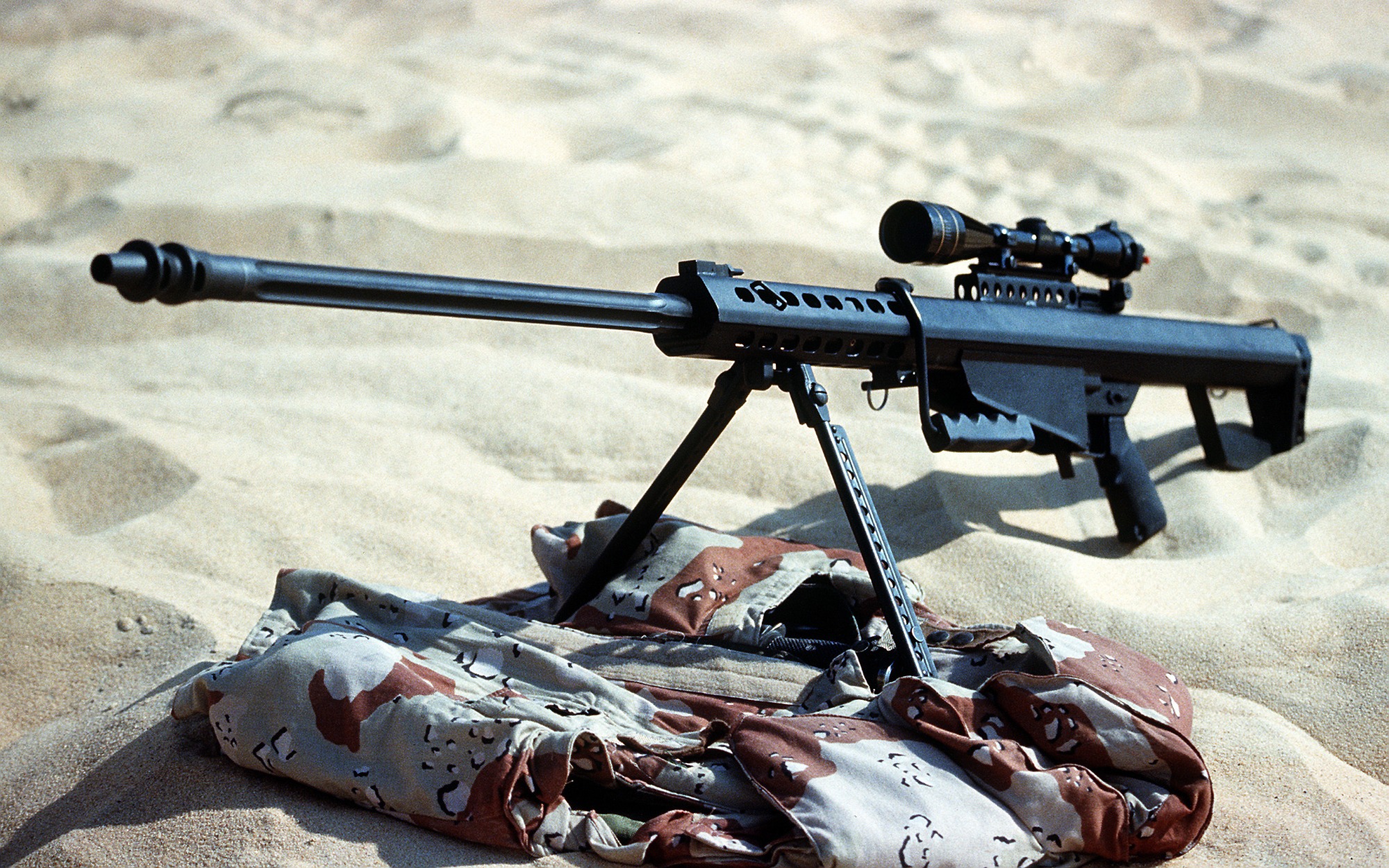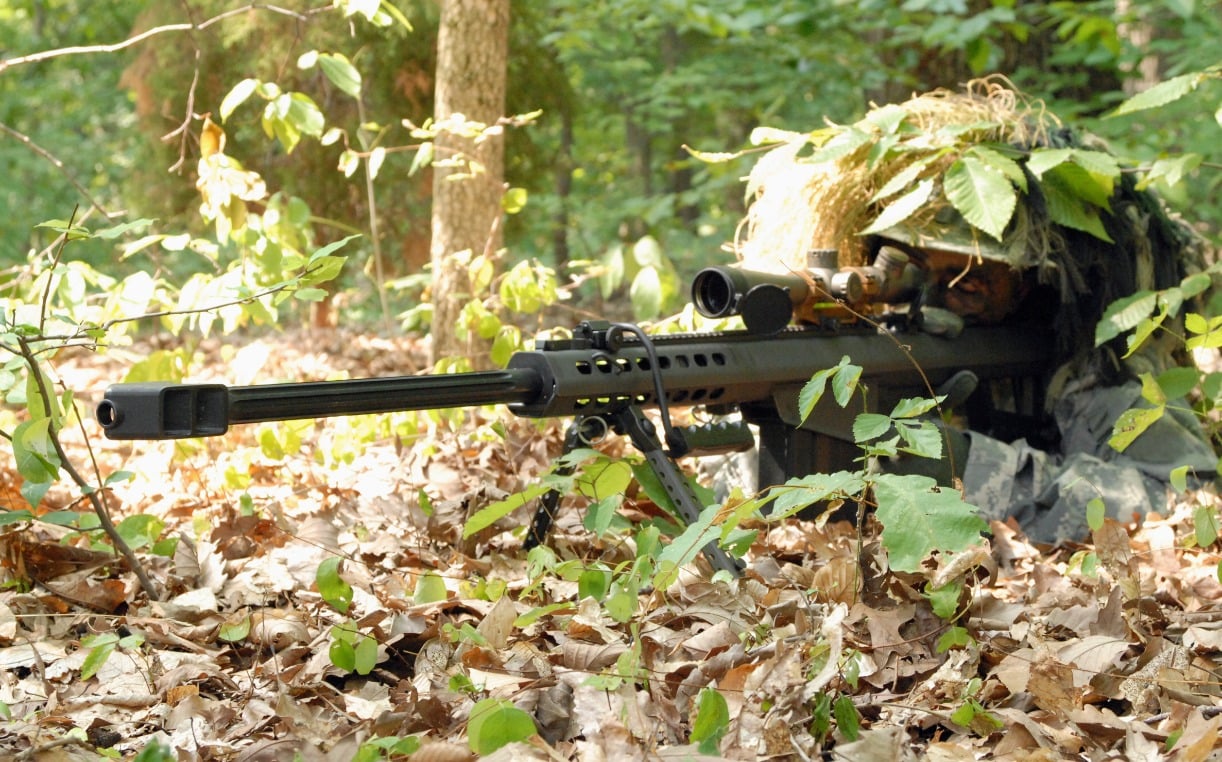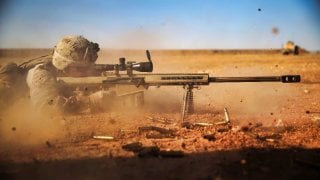The Extreme Long Range Sniper Rifle Will Never Fire a Shot
U.S. Special Operations Command (SOCOM) has paused its search for a new long-range sniper and anti-materiel rifle, known as the Extreme Long Range Sniper Rifle (ELR-SR). Intended to replace the Barrett M82 and McMillan Mk 15 rifles, the ELR-SR was designed for greater range, lighter weight, and more compact form.
What You Need to Know: U.S. Special Operations Command (SOCOM) has paused its search for a new long-range sniper and anti-materiel rifle, known as the Extreme Long Range Sniper Rifle (ELR-SR). Intended to replace the Barrett M82 and McMillan Mk 15 rifles, the ELR-SR was designed for greater range, lighter weight, and more compact form.
-SOCOM indicated it is now prioritizing other efforts and could explore improvements to existing .50 caliber systems.
-The halt leaves questions about SOCOM’s future sniper rifle plans, though global demand for long-range precision capabilities remains high, as seen with continued use of the Barrett M82.

SOCOM’s (U.S. Special Operations Command) search for a new heavyweight sniper/anti-materiel rifle has been put on hold. The procurement project, known as the Extreme Long Range Sniper Rifle (ELR-SR), was intended to replace the Barrett M82 series of .50 caliber semi-automatic rifles and the McMillan Mk 15s.
“At the moment, we are not moving forward with this [ELR-SR] effort,” SOCOM wrote in a contracting notice last month.
“We appreciate your interest and hard work in responding to this request for information (RFI). Due to changing priorities, we are pursuing other efforts.”
Canceling the Program
The RFI that SOCOM is referring to was issued last December.
The RFI listed requirements for a weapon that was bolt-action designed, with a range of at least 2,500 meters, which is longer than twenty-seven football fields, and longer than the range of the Barrett M82 or the Mk 15. The RFI also demanded that the new rifle be shorter and lighter than the .50 caliber rifles already in use.
While the existing rifles in use were .50 caliber, SOCOM indicated an open-mindedness to calibers in the future. “SOCOM confirmed that it was open to rifles in new calibers to meet its ELR-SR needs and that the effort was building off previous work done by the Pentagon’s Irregular Warfare Technical Support Directorate (IWTSD),” The War Zone reported.

IWTSD had recently produced a non .50 caliber round, the .375 EnABELR (Engineered by Applied Ballistics for Extreme Long Range), that showed long-range promise. IWSTD had also produced a bolt-action rifle that was capable of firing the EnABELR round.
Next Steps?
SOCOM’s next steps are not clear; SOCOM could pursue projects with similar operational requirements. “Even if it’s [ELR-SR] just [the] improvement of our current.50 Cal systems, that’s fine, too” said U.S. Army Colonel John Lancaster at the SOF Week conference earlier in 2024. “We can make the .50 Cal better than it is right now. We haven’t done anything with that in a while.”
Indeed, the M82 and the Mk15 were both developed in the 1980s. The M82 is a recoil-operated, semi-automatic anti-materiel rifle that has been in service since 1989. Since debuting over three decades ago, the M82 has seen combat in everything from the Troubles to the Soviet-Afghan War to the Iraq War to the Russo-Ukraine War.
The M82 is no longer produced but is still widely used. With a muzzle velocity of 2.799 feet per second and an effective firing range of 1,969 yards, the M82 is a powerful system that packs enough punch to be used in the anti-materiel role.
The M82 is still in demand worldwide, “there clearly continues to be demand, including among special operations forces, for the kinds of very long-range precision engagement capabilities that .50 caliber heavyweight sniper/anti-materiel rifles offer,” The War Zone reported.
Moving forward, “what other new capabilities SOCOM might not pursue instead of ELR-SR, or if it ultimately returns to seeking another similar” weapon “remains to be seen.”
About the Author: Harrison Kass
Harrison Kass is a defense and national security writer with over 1,000 total pieces on issues involving global affairs. An attorney, pilot, guitarist, and minor pro hockey player, Harrison joined the US Air Force as a Pilot Trainee but was medically discharged. Harrison holds a BA from Lake Forest College, a JD from the University of Oregon, and an MA from New York University. Harrison listens to Dokken.
Image Credit: Creative Commons and/or Shutterstock.


